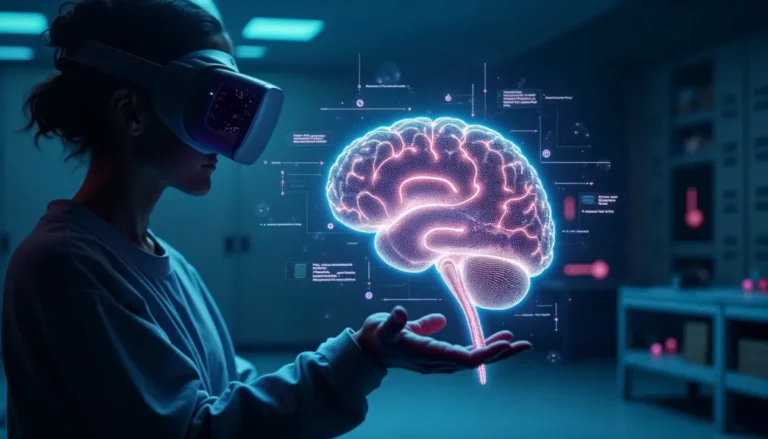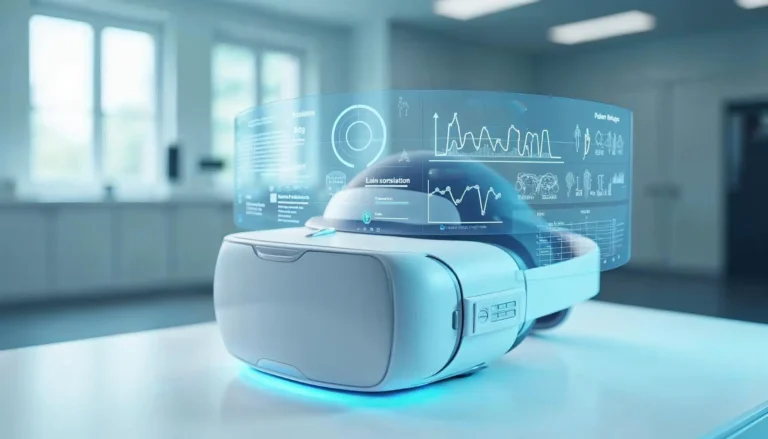Book Appointment Now

Virtual Reality in Physiotherapy: A Contemporary Approach
Introduction
The integration of Virtual Reality (VR) technology into physiotherapy represents a significant advancement in healthcare rehabilitation. This innovative approach combines immersive technology with traditional rehabilitation techniques, offering new possibilities for patient care and recovery. VR Physiotherapy creates interactive, engaging environments that enhance the rehabilitation experience while maintaining therapeutic efficacy. As healthcare continues to evolve, this technology demonstrates remarkable potential in transforming conventional rehabilitation practices.
Core Principles and Implementation
Virtual Reality Physiotherapy operates through a sophisticated system of immersive technology integrated with therapeutic principles. Patients utilize VR headsets or motion-sensing devices to interact with specially designed virtual environments. These environments facilitate targeted movements and exercises crucial for rehabilitation. The system continuously tracks patient movements in real-time, providing immediate feedback and allowing for precise adjustments to the therapy program.
The implementation process begins with a comprehensive assessment where physiotherapists evaluate the patient’s condition, including mobility, strength, and range of motion. Based on this assessment, they develop a customized VR therapy program targeting specific rehabilitation needs. Throughout the treatment, sophisticated software monitors patient performance, enabling therapists to track progress and modify programs as needed. This technological integration ensures that each therapy session maximizes therapeutic benefit while maintaining patient engagement.
Clinical Benefits and Therapeutic Value
Virtual Reality Physiotherapy offers substantial advantages in the rehabilitation process. The technology significantly enhances patient engagement through immersive experiences, leading to improved compliance with treatment protocols. Real-time feedback mechanisms enable patients to refine their movements instantly, ensuring proper technique and maximizing therapeutic benefits. Research indicates that the immersive nature of VR can effectively reduce pain perception, allowing patients to perform exercises more comfortably and effectively.
The customization capabilities of VR systems prove particularly valuable in addressing diverse patient needs. Whether treating post-surgical conditions, neurological disorders, or chronic pain, the virtual environment can be precisely tailored to meet specific therapeutic requirements. This adaptability ensures that each patient receives targeted intervention aligned with their rehabilitation goals. Furthermore, the gamification elements inherent in VR therapy help maintain patient motivation throughout the recovery process, leading to better adherence to treatment protocols and improved outcomes.
Clinical Applications and Specializations
VR Physiotherapy demonstrates remarkable versatility across various medical specialties. In neurological rehabilitation, it aids patients recovering from conditions such as stroke or Parkinson’s disease by facilitating motor skill retraining through targeted exercises. The technology’s ability to create controlled, repeatable environments makes it particularly effective in helping patients reestablish neural pathways and improve functional movements.
Orthopedic rehabilitation benefits from precise movement tracking and gradual progression of exercises, supporting recovery from surgeries and injuries while minimizing re-injury risks. The system’s ability to monitor and adjust exercise intensity ensures that patients progress safely through their rehabilitation program. This precise control over movement parameters helps prevent compensation patterns that could impede recovery.
The technology has shown particular promise in pediatric therapy, where the engaging nature of VR helps maintain young patients’ interest and participation. Children often view therapy sessions as an opportunity for play rather than treatment, leading to better engagement and outcomes. In chronic pain management, VR-based interventions offer non-pharmacological approaches to pain reduction while improving mobility. The immersive environment helps distract patients from pain sensations, enabling them to complete necessary exercises more effectively.
Cardiac rehabilitation programs increasingly incorporate VR to provide safe, monitored physical activity for patients recovering from heart conditions. The technology allows for precise control over exercise intensity and duration, ensuring patients remain within safe cardiovascular parameters while gradually building strength and endurance.
Technology Integration and Healthcare Evolution
The integration of VR Physiotherapy into healthcare systems represents a significant step toward modernizing rehabilitation services. Remote rehabilitation capabilities enable patients to access therapy from their homes, particularly beneficial for those with mobility limitations or in remote locations. This technological advancement supports the growing trend toward telehealth services while maintaining high standards of care. The ability to collect and analyze detailed performance data helps healthcare providers make informed decisions about treatment progression and modification.
Conclusion
VR Physiotherapy represents a significant advancement in rehabilitation medicine, offering new possibilities for patient care and recovery. Its ability to combine engaging technology with evidence-based therapeutic practices positions it as a valuable tool in modern healthcare. The technology’s versatility in addressing various conditions, combined with its capacity for precise monitoring and adjustment, makes it an increasingly important component of contemporary rehabilitation programs.
As research progresses and technology evolves, VR Physiotherapy continues to demonstrate its potential in transforming rehabilitation practices and improving patient outcomes. Healthcare providers embracing this technology position themselves at the forefront of medical innovation, ready to meet the evolving demands of contemporary healthcare delivery. The continued development of VR applications in physiotherapy suggests an exciting future where technology and traditional therapy methods work in harmony to optimize patient recovery and rehabilitation.



